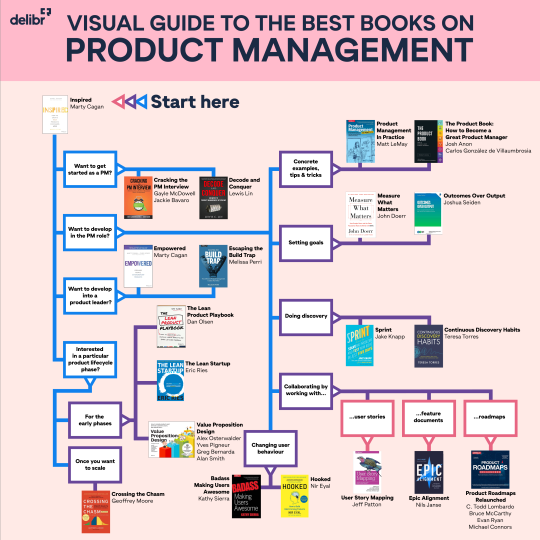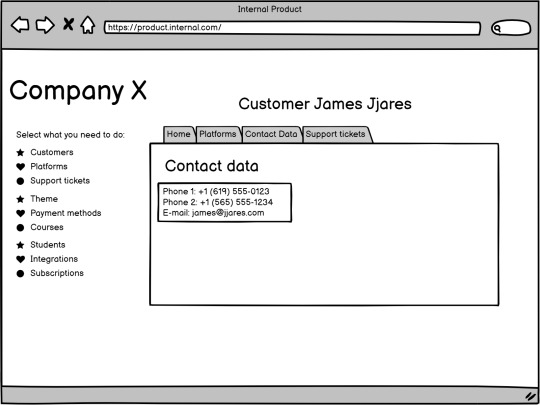#product management
Text
Oh, I've felt that. Anyone who's ever had to do customer testing felt that.
I sent all the details with original e-mail. I had tons of e-mails asking those same questions in reply to the original e-mail.

31 notes
·
View notes
Text
Product Development Roadmap: Drive Innovation & Success
Unlock your product's full potential with ProductHQ's product development roadmap solutions. From ideation to launch, our intuitive platform empowers you to plan, track, and execute every stage of your product's development journey seamlessly. Explore our website to drive your product development forward today!
2 notes
·
View notes
Text

This is is my style of product marketing
#ʙᴀᴛʜɪɴɢᴏᴡʟ#skatelife#skateboarding#HUF#vandalism#product marketing#product management#lol#lol memes#skate punk#skatergirl#skater boy
4 notes
·
View notes
Text
🌐 In today's fast-paced, tech-driven world, the art of product engineering is more crucial than ever. It blends creativity with functionality, turning ideas into real-world solutions. From smartphones to smart homes, it works to elevate our digital experiences, making technology accessible and impactful.💡🌍
#product engineering services#product engineering solutions#product management#product#digital products#lowcode#mobiosolutions#uk
3 notes
·
View notes
Text





Was ich im März so gelesen habe.
Im März hab ich viel über Product Management gelesen und mich weitergebildet, hab den Gesang der Flusskrebse verschlungen und mich zwischendurch immer wieder mit dem Comfort Book gemütlich zurückgezogen.
Alle diese Bücher waren ziemlich super, jeweils 4 von 5 Sternen :)
8 notes
·
View notes
Text
3 notes
·
View notes
Text
Revealing Strategies for Expansion: Enhancing Disney+ Hotstar's Streaming Success 📈.
In the swiftly changing realm of digital entertainment, maintaining a competitive edge is paramount. Disney+ Hotstar, a prominent contender in the streaming industry, has been captivating viewers with its extensive content offerings. To amplify its presence and capture a larger market share, here are several growth strategies that Disney+ Hotstar can adopt:
1. Maximizing Utilization of Existing Subscription Plans:
In its portfolio, Disney+ Hotstar offers subscription plans designed to cater to a diverse range of audiences, namely VIP and Premium tiers. By focusing on its current user base, the platform can harness the potential of vigorous marketing campaigns and time-limited discounts. These initiatives have the potential to attract existing users to elevate their subscription level or extend their current subscriptions, thereby generating augmented revenue and boosting engagement.
2. Diversifying Content to Engage Existing Subscribers:
To sustain momentum, Disney+ Hotstar can broaden its content spectrum by introducing novel genres and categories. This entails launching fresh original content, acquiring rights to popular shows and movies, and collaborating with regional content creators. Through these endeavors, the platform can present a captivating variety of entertainment options that not only retain existing subscribers but also allure new ones.
3. Global Expansion for Extended Reach:
The trajectory of Disney+ Hotstar need not be limited to its current market boundaries. The platform can explore new regions and international markets where it has yet to establish a significant presence. In order to thrive in these uncharted territories, it's essential to localize content and offer language support that resonates with the local populace. By broadening its geographical footprint, Disney+ Hotstar can secure a more expansive segment of the streaming market.
4. Venturing into Unconventional Content Realms:
Stepping beyond conventional content avenues can lead to transformative outcomes. Disney+ Hotstar has the potential to venture into related or even unrelated markets, unveiling innovative offerings that cater to a wide spectrum of preferences. For instance, specialized streaming services focused on sports, gaming, or educational content can engage niche audiences while enhancing the platform's overall appeal.
In Conclusion: Propelling the Future of Streaming with Disney+ Hotstar
As the streaming landscape evolves, Disney+ Hotstar has a unique chance to shape its journey towards sustained growth and market dominance. By embracing a multifaceted strategy that leverages its current strengths, ventures into unexplored territories, and diversifies its content portfolio, Disney+ Hotstar can continue captivating global audiences. In a world where viewers crave fresh, immersive, and captivating experiences, Disney+ Hotstar is well-positioned to emerge as a frontrunner in the ever-expanding domain of digital entertainment.
Note: This blog is speculative in nature and does not reflect any official plans or decisions made by Disney+ Hotstar.
2 notes
·
View notes
Text

Cracking Startup Interview
The interview process provides only a brief glimpse into a candidate��s thought process and capabilities. Furthermore, the hiring managers at startups operate within the constraints of limited data, time, and resources when seeking to make a hire. So, how can you make sure you nail this final step in the hiring process?
2 notes
·
View notes
Text

The Psychology of Colour in Product Design and Branding -
Creating brands with a customer-oriented approach that starts at product design
Welcome to a vibrant kaleidoscope of colour psychology, where hues create memorable brands and shades influence emotions to make a product’s design more relatable. Take a journey through the world of brand building and product design and unlock the hidden power colour psychology hold over our minds and moods.
Building brands involves keen attention to detail. One aspect of such a detail-oriented approach is the process of helping customers recognize your brand through a specific colour scheme. Colour is a powerful tool that plays a crucial role in product design and branding. It has the ability to evoke emotions, influence perceptions, and shape consumer behavior.
Understanding the psychology of colour is essential for creating effective and impactful visual experiences. In this blog post, we will delve into the fascinating world of colour psychology and explore how it can be leveraged in product design and branding strategies.
Read full article on our blog https://www.phindia.com/blogs/2023/08/16/the-psychology-of-color-in-product-design-and-branding/
#newphiblogpost#branding#productdesign#productlifecycle#product management#brand management#brandequity#phibooks#phibookclub#ebook#education#undergraduate#books#philearning#kindle
3 notes
·
View notes
Text
https://www.accionlabs.com/product-engineering-services
At Accion Labs, we specialize in providing top-notch product engineering services to help businesses thrive in the ever-evolving digital landscape. Our experienced team of engineers and experts is committed to delivering cutting-edge solutions tailored to your unique requirements. Whether you need product engineering assessment, rationalization, or transformation, we've got you covered.
#product engineering services#Product development services#Product design and engineering#Product innovation services#Product Management
2 notes
·
View notes
Text

Visual guide to the best books on product management - from overview ones to others, focused on specific areas. Feature such tresures as Inspired, The Lean Startup, Crossing the Chasm, Escaping the Build Trap, Outcomes over Output, and some 16 more.
1 note
·
View note
Text
Altering the NPS metric
This could be a song title: "Business' features"...
A long time ago I worked on an internal product that managed the entire customer journey: from when he was only a lead until the contract with him ended.

Wireframe of the internal product. Every customer of the company was listed in a specific screen of the product.
At that time we didn't have anything that identified the way the customer behaved with the company's products. This bothered me a lot because we didn't know how the clients were stimulated by the solution, so it could impact the Net Promoter Score (NPS) of other B2C products in our company. Our sales, support and marketing team used the information in that internal solution about the customers to make calls, do meetings, etc. So, in order to the company employees understand the customer's feelings and particularities about the product he hired, I thought about a tag system:

In my mind, that's how the tags worked. "Excited" means the customer was very excited about his product and "Sender" means he sends a lot of e-mails.
In order to validate my idea, I talked to the support and sales teams' coordinators and they said that this was a great idea. The first big thing we were suposed to do was a screen to manage the tags:

This is a CRUD (Create, Read, Update and Delete) for the tag system, listing each one that we had on the product and with the option of creating a new tag.
In order to specify the screen that enabled the tag management, I had to create a story for it. The story was composed by the following:
User story;
Acceptance criteria;
Risks;
Tests.
If the user wanted to create a new tag, the internal product should have the possibility of tag creation. This is a similar task to the issue I created for that:

I'm using Scrum in this example, but we actually used Kanban. This issue was created in Jira Software.
The feature was then worked on, reviewed by the developers and me and finally documented because this increment needed it. According to the Agile Manifesto we must have working software over comprehensive documentation.
The final result was, after managing the tags, a screen where we could attach the customer to a tag, given that we had the permission to do it.

The customer with the tags besides his name.
This is the case for today folks. I really liked this Tumblr stuff and I hope to do more in the future.
Cya,
Bisol :)
#product management#wireframe#technology#tech#planning#issues#jira software#internal product#product ownership
9 notes
·
View notes
Text
Need of Temperature Controlled Service For Your Product | Life Care Logistic
Life Care Logistic in Indore provides the best Temperature-controlled logistics to ensure a stable and verified temperature-controlled distribution process of your products and goods throughout the country. Our temperature-controlled logistics solutions present a stable and verified supply chain to your needs and require with a variety of modern offerings. Our Life Care Logistic storage system helps maintain the quality of the products and goods properly.
2 notes
·
View notes
Text
Processing… this old dog still has tricks. I’ve worked for three years to get to a specific work role and turns out I was right! The last couple of months have been challenging but today I had a feeling of delight that has never come from work in the past. I even did a happy dance. More than once. I’m giddy.
#productdevelopment#software development#agile software development#cloud computing#collaboration#teams#delivering value#find your passion#transferrable skills#leadership#servant leadership#teamwork#product management#happy dance#lovewhatido#while it lasts#cynicism#not my first rodeo#not my last either#work life
2 notes
·
View notes
Text
Pursuing an MBA for Product Management
Are you aspiring to make a mark in the dynamic realm of product management? Are you contemplating whether pursuing an MBA could enhance your prospects in this field? Look no further. In this comprehensive guide, we'll delve into the advantages of pursuing an MBA for product management and provide valuable insights into choosing the right MBA program to propel your career forward.
Advantages of an MBA for Product Management
1. Strategic Vision: One of the primary advantages of an MBA for product management is the development of a strategic vision. MBA programs equip students with essential skills in market analysis, financial management, and strategic planning. These skills are crucial for product managers, as they need to understand market trends, assess competition, and formulate effective strategies to drive product success.
2. Leadership and Management Skills: Product managers play a pivotal role in leading cross-functional teams to bring a product to market successfully. An MBA curriculum often includes courses in leadership, organizational behavior, and team management, which are essential for honing the interpersonal and managerial skills required for effective product management.
3. Business Acumen: Product managers need to have a deep understanding of business principles to make informed decisions about product development, pricing, and marketing strategies. An MBA provides a comprehensive understanding of various business functions, such as marketing, finance, operations, and supply chain management, enabling product managers to make well-informed and strategic decisions that drive business growth.
4. Networking Opportunities: Another significant advantage of pursuing an MBA for product management is the opportunity to network with professionals from diverse backgrounds. MBA programs often provide access to a vast network of alumni, industry experts, and recruiters, which can open doors to job opportunities, mentorship, and collaboration in the field of product management.
5. Credibility and Career Advancement: An MBA degree from a reputable institution enhances your credibility as a product management professional and opens up opportunities for career advancement. Many companies prefer hiring candidates with an MBA for senior-level product management roles, as it demonstrates a commitment to continuous learning and development.
Choosing the Right MBA Program
Now that you understand the advantages of pursuing an MBA for product management, let's discuss how to choose the right program that aligns with your career goals and aspirations.
1. Specialization in Product Management: Look for MBA programs that offer specializations or concentrations in product management or related fields such as marketing or entrepreneurship. These programs provide focused coursework and experiential learning opportunities specifically tailored to the needs of aspiring product managers.
2. Industry Connections and Internship Opportunities: Consider MBA programs that have strong connections with leading companies in the technology, consumer goods, healthcare, or other industries where product management roles are prevalent. These programs often offer internship opportunities, corporate projects, and networking events that can help you gain valuable hands-on experience and build industry connections.
3. Faculty Expertise and Industry Experience: Research the faculty profiles of MBA programs to ensure they have expertise in product management or related fields. Look for professors who have practical experience working as product managers or consultants in the industry, as they can provide valuable insights and mentorship to help you succeed in your career.
4. Alumni Success Stories and Placement Records: Evaluate the alumni success stories and placement records of MBA programs to gauge their effectiveness in preparing students for careers in product management. Look for programs with a track record of placing graduates in leading companies or startups in product management roles.
5. Flexibility and Diversity: Consider the flexibility and diversity of MBA programs in terms of class formats, schedule options, and student demographics. Choose a program that offers flexibility to accommodate your personal and professional commitments and provides opportunities to collaborate with peers from diverse backgrounds and industries.
Top FAQs
Who is eligible for MBA in product management? Most MBA programs require applicants to have a bachelor's degree from an accredited institution and a competitive GMAT or GRE score. While prior work experience in product management or related fields is not always required, it can strengthen your application and provide valuable insights for classroom discussions.
Can you do product management after an MBA? Yes, pursuing an MBA can open up opportunities for a career in product management. Many MBA programs offer coursework, internships, and networking opportunities specifically tailored to aspiring product managers. Additionally, the skills and knowledge gained through an MBA curriculum, such as strategic planning, market analysis, and leadership, are highly relevant to roles in product management.
In conclusion, pursuing an MBA can provide you with the necessary skills, knowledge, and connections to excel in the field of product management. By choosing the right MBA program that aligns with your career goals and aspirations, you can embark on a rewarding journey towards becoming a successful product manager in today's competitive business landscape. For those seeking the best MBAs for product management, consider programs that offer specialized coursework, industry connections, and a track record of alumni success. Additionally, it's worth noting that institutes such as the Institute of Product Management also provide UGC-accredited degrees in product management, offering another avenue for advancing your career in this dynamic field.
0 notes
Text
Defining Product Management for Success in the Modern Market
In today's fast-paced business landscape, the role of product management has become increasingly pivotal. As markets evolve and consumer demands shift, businesses must adapt and innovate to stay ahead. Product management serves as the compass guiding companies through these dynamic waters, ensuring that their offerings remain relevant, competitive, and aligned with customer needs.
What is the current definition of product management?
Product management encompasses the strategic planning, development, and execution of a product or service throughout its lifecycle. It involves market research, identifying customer needs, defining product features, and collaborating with cross-functional teams to deliver value to the target market. Product managers serve as the driving force behind product success, balancing business objectives, technological feasibility, and user experience to create solutions that resonate with customers.
Why is product management important in the modern world?
In today's hyperconnected world, where competition is fierce and consumer preferences are ever-changing, product management plays a crucial role in driving business growth and innovation. By understanding market trends, analyzing competitors, and gathering customer feedback, product managers can identify emerging opportunities and anticipate market shifts. They bridge the gap between business strategy and product development, ensuring that resources are allocated efficiently and that products meet market demands.
Moreover, product management fosters a customer-centric approach, putting the needs and preferences of users at the forefront of decision-making. By continuously iterating and improving products based on user feedback, companies can build loyal customer relationships and stay ahead of the competition. In essence, product management serves as the linchpin that aligns business objectives with customer needs, driving sustainable growth and competitive advantage.
What is the role of a product manager in modern marketing?
In the realm of modern marketing, product managers play a multifaceted role that extends beyond traditional product development. They act as liaisons between marketing, sales, engineering, and other departments, ensuring cross-functional alignment and collaboration. Product managers leverage their deep understanding of market dynamics and consumer behavior to inform marketing strategies, messaging, and positioning.
Additionally, product managers are instrumental in product launches and go-to-market strategies, orchestrating efforts to maximize product visibility and adoption. They work closely with marketing teams to craft compelling narratives, develop marketing collateral, and execute targeted campaigns that resonate with the target audience. By aligning product development with marketing initiatives, product managers can drive demand, generate leads, and ultimately drive revenue growth.
How do you define product management, and what excites you the most about it?
Product management, to me, is the art of bringing ideas to life, from conception to delivery, in a way that creates meaningful value for both businesses and customers. It's about understanding the market landscape, empathizing with users, and relentlessly pursuing innovation to solve real-world problems. What excites me the most about product management is the opportunity to be at the forefront of change, to continuously learn and adapt in a dynamic environment, and to see the impact of our efforts reflected in the success of the products we create.
In conclusion, product management stands as the cornerstone of success in today's rapidly evolving market landscape. Embracing the principles of product management and fostering a culture of innovation can propel businesses to new heights of growth and competitiveness. For professionals aspiring to deepen their understanding and proficiency in product management, pursuing further education can be instrumental. An MBA for Product Management provides a comprehensive curriculum tailored to the needs of aspiring product leaders, equipping them with the strategic acumen, market insights, and leadership skills necessary to excel in their roles.
One notable institution offering such a program is the Institute of Product Leadership. Their MBA for Product Management combines academic rigor with real-world applicability, empowering students to drive innovation, lead cross-functional teams, and navigate the complexities of modern business environments effectively. By enrolling in an MBA program specifically designed for product management, professionals can gain a competitive edge, accelerate their career growth, and make a lasting impact in the dynamic world of product innovation.
0 notes